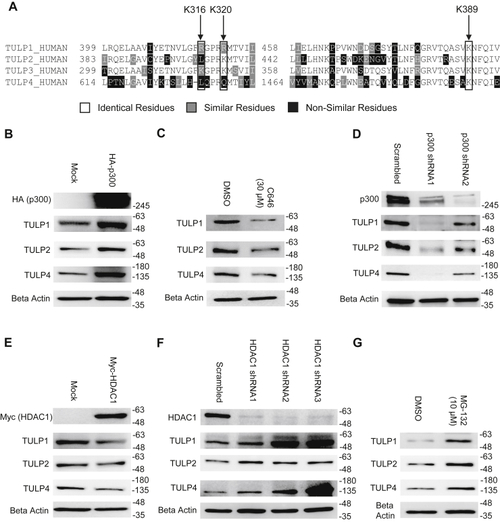
p300 and HDAC1 influence the stability of multiple tubby-like proteins.A, sequence alignment of the four human TULP proteins (TULP1-4) performed using ClustalW software. Identical, similar, and nonsimilar residues are color coded as indicated. Key acetylation sites are indicated with arrows. B, western blot showing TULP1, TULP2, and TULP4 protein levels in 293T cells transfected with either a control plasmid or a plasmid encoding HA-p300. Cells were harvested 48 h posttransfection. C, western blot showing levels of TULP1, TULP2, and TULP4 in 293T following 24 h treatment with either DMSO or 30 μM C646. D, western blot of p300, TULP1, TULP2, and TULP4 protein levels following stable transduction of p300 shRNAs into 293T cells. E, western blot showing TULP1, TULP2, and TULP4 protein levels in 293T cells transfected with either a control plasmid or a plasmid encoding Myc-HDAC1. Cells were harvested 48 h posttransfection. F, immunoblot showing p300, TULP1, TULP2, and TULP4 protein levels following stable transduction of HDAC1 shRNAs into 293T cells. G, western blot showing levels of TULP1, TULP2, and TULP4 in 293T cells following 9 h treatment with either DMSO or 10 μM MG-132.
|